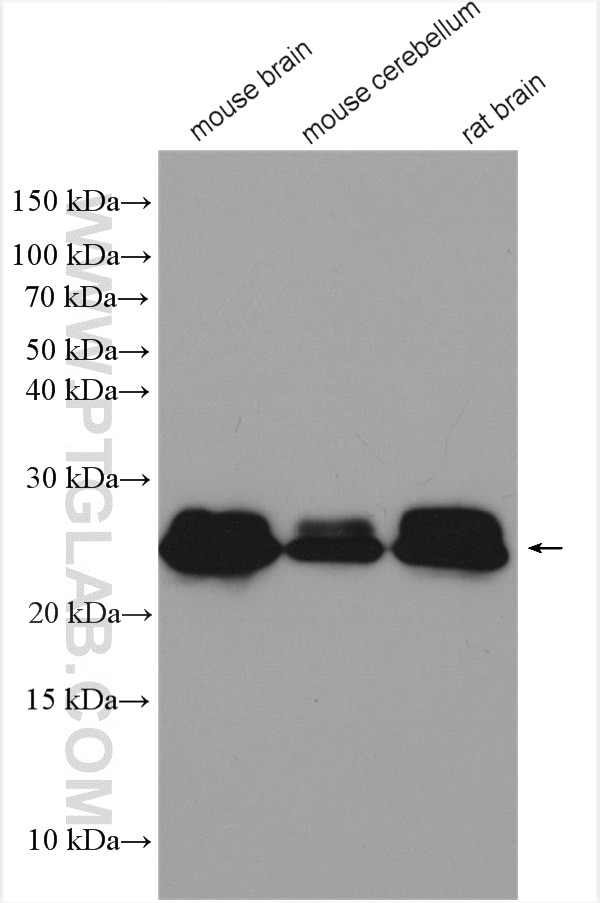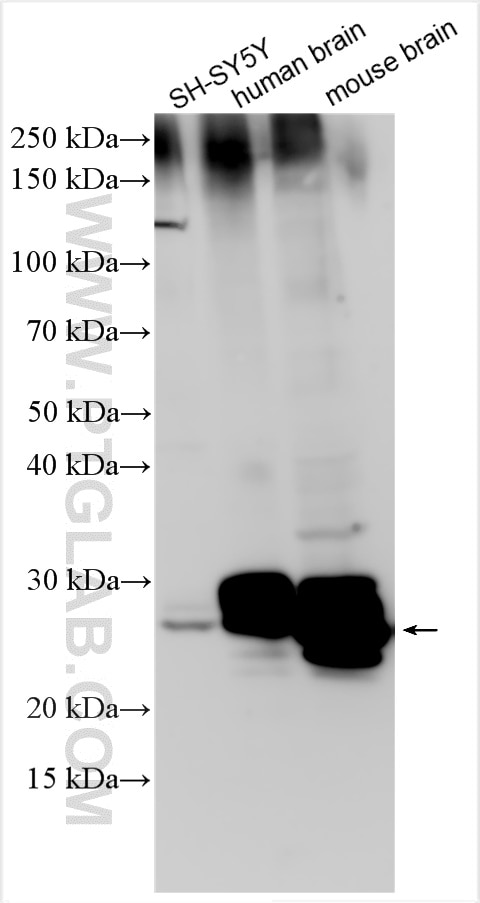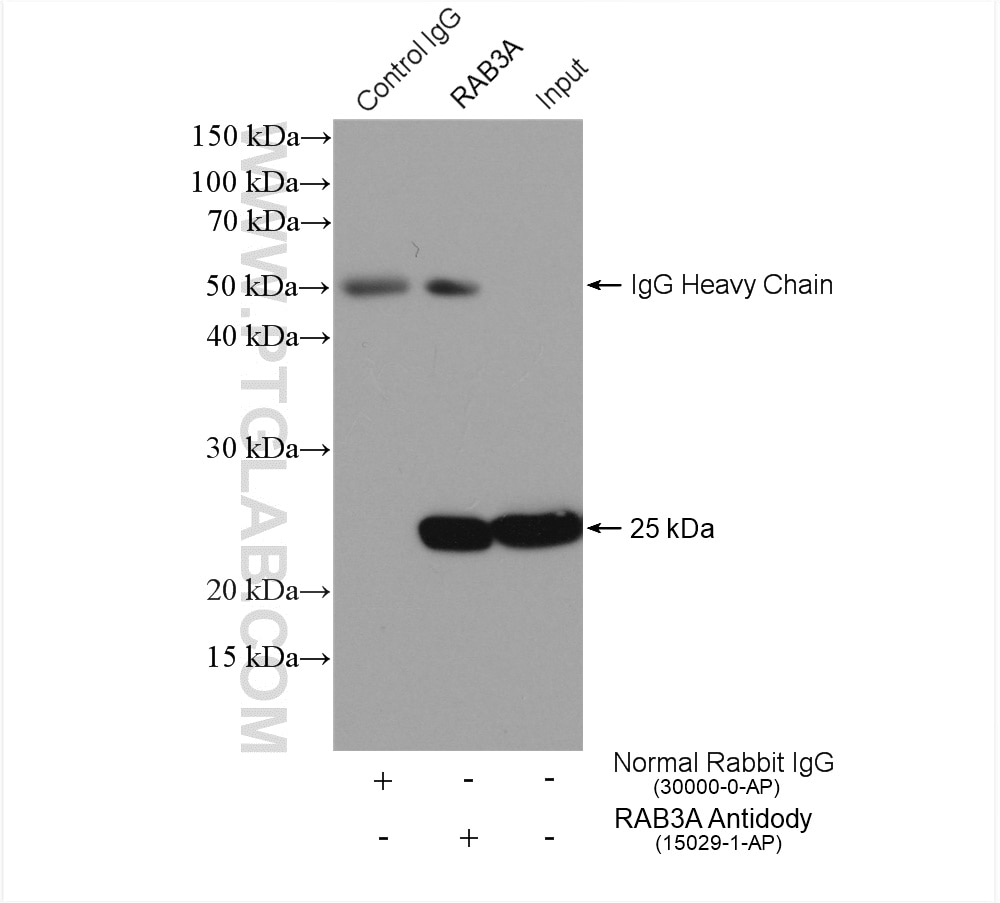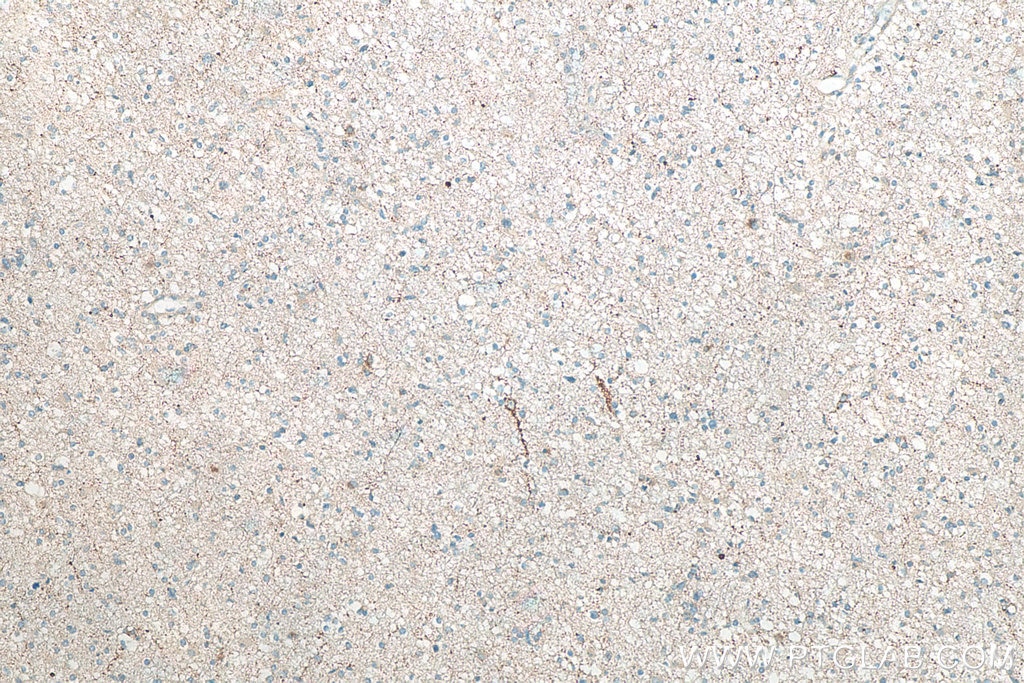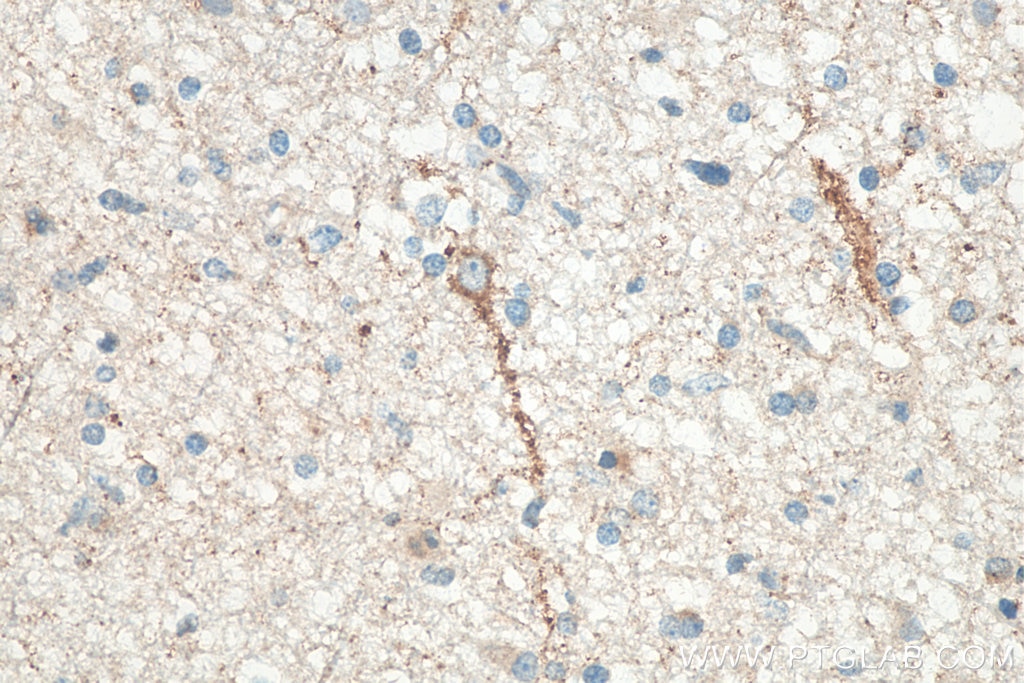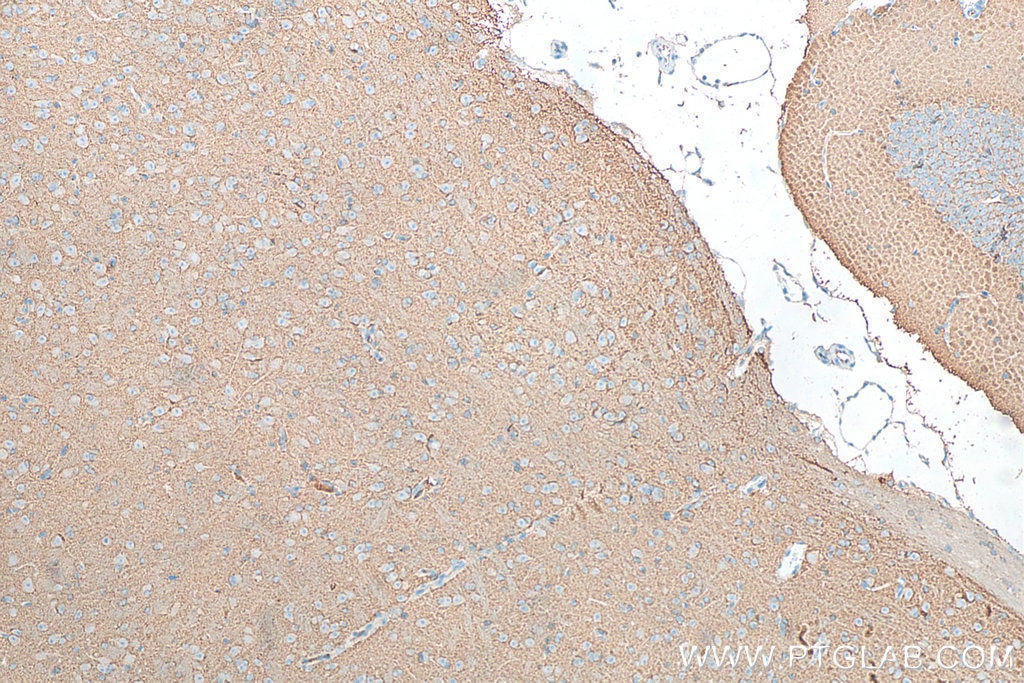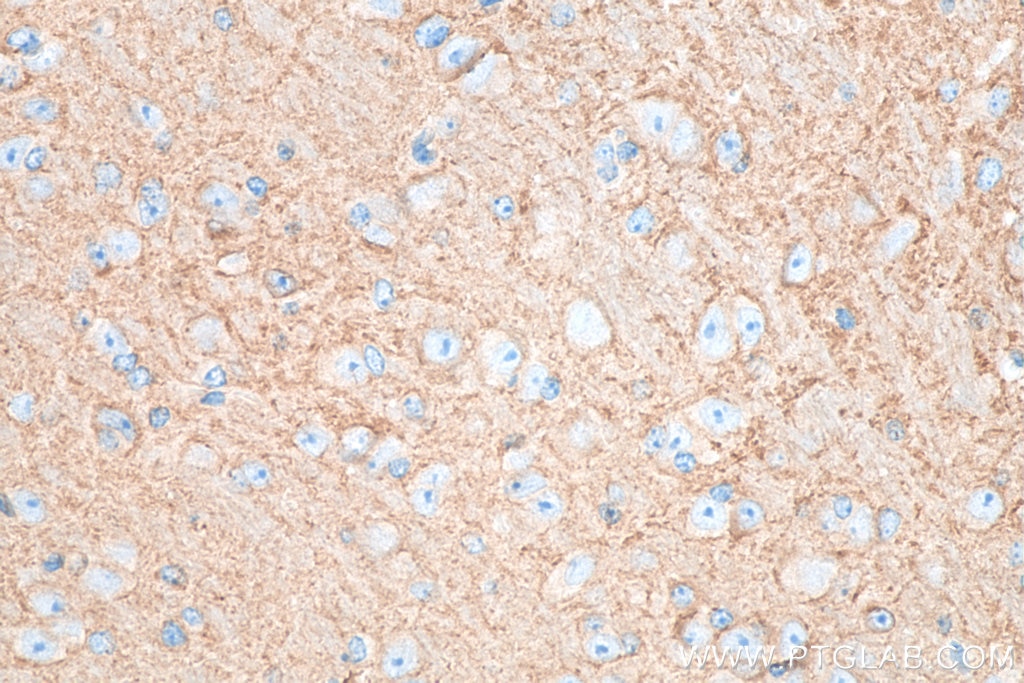- Phare
- Validé par KD/KO
Anticorps Polyclonal de lapin anti-RAB3A
RAB3A Polyclonal Antibody for WB, IP, IHC, ELISA
Hôte / Isotype
Lapin / IgG
Réactivité testée
Humain, rat, souris
Applications
WB, IHC, IF, IP, CoIP, ELISA
Conjugaison
Non conjugué
N° de cat : 15029-1-AP
Synonymes
Galerie de données de validation
Applications testées
| Résultats positifs en WB | tissu cérébral de souris, cellules SH-SY5Y, tissu cérébral de rat, tissu cérébral humain, tissu de cervelet de souris |
| Résultats positifs en IP | tissu cérébral de souris, |
| Résultats positifs en IHC | tissu de gliome humain, tissu cérébral de souris il est suggéré de démasquer l'antigène avec un tampon de TE buffer pH 9.0; (*) À défaut, 'le démasquage de l'antigène peut être 'effectué avec un tampon citrate pH 6,0. |
Dilution recommandée
| Application | Dilution |
|---|---|
| Western Blot (WB) | WB : 1:1000-1:6000 |
| Immunoprécipitation (IP) | IP : 0.5-4.0 ug for 1.0-3.0 mg of total protein lysate |
| Immunohistochimie (IHC) | IHC : 1:50-1:500 |
| It is recommended that this reagent should be titrated in each testing system to obtain optimal results. | |
| Sample-dependent, check data in validation data gallery | |
Applications publiées
| KD/KO | See 2 publications below |
| WB | See 11 publications below |
| IHC | See 3 publications below |
| IF | See 3 publications below |
| CoIP | See 1 publications below |
Informations sur le produit
15029-1-AP cible RAB3A dans les applications de WB, IHC, IF, IP, CoIP, ELISA et montre une réactivité avec des échantillons Humain, rat, souris
| Réactivité | Humain, rat, souris |
| Réactivité citée | rat, Humain, souris |
| Hôte / Isotype | Lapin / IgG |
| Clonalité | Polyclonal |
| Type | Anticorps |
| Immunogène | RAB3A Protéine recombinante Ag1903 |
| Nom complet | RAB3A, member RAS oncogene family |
| Masse moléculaire calculée | 25 kDa |
| Poids moléculaire observé | 25 kDa |
| Numéro d’acquisition GenBank | BC011782 |
| Symbole du gène | RAB3A |
| Identification du gène (NCBI) | 5864 |
| Conjugaison | Non conjugué |
| Forme | Liquide |
| Méthode de purification | Purification par affinité contre l'antigène |
| Tampon de stockage | PBS with 0.02% sodium azide and 50% glycerol |
| Conditions de stockage | Stocker à -20°C. Stable pendant un an après l'expédition. L'aliquotage n'est pas nécessaire pour le stockage à -20oC Les 20ul contiennent 0,1% de BSA. |
Informations générales
Rab3A is a small G-protein of the Rab family, that is implicated in vesicle fusion and regulated secretion, particularly in neurotransmitter release. Rab3 subfamily small G proteins (Rab3A, Rab3B, Rab3C, and Rab3D) control the regulated exocytosis in neuronal/secretory cells. Rab3A is the most abundant Rab GTPase in brain, where it is associated with synaptic vesicles. Rab3A is believed to modulate secretion efficiency by stimulating vesicle recruitment to sites of exocytosis and/ or by recruiting regulatory molecules to the docking/ fusion machinery.
Protocole
| Product Specific Protocols | |
|---|---|
| WB protocol for RAB3A antibody 15029-1-AP | Download protocol |
| IHC protocol for RAB3A antibody 15029-1-AP | Download protocol |
| IP protocol for RAB3A antibody 15029-1-AP | Download protocol |
| Standard Protocols | |
|---|---|
| Click here to view our Standard Protocols |
Publications
| Species | Application | Title |
|---|---|---|
Mol Oncol Overexpression of synaptic vesicle protein Rab GTPase 3C promotes vesicular exocytosis and drug resistance in colorectal cancer cells | ||
Mol Cancer Secretory RAB GTPase 3C modulates IL6-STAT3 pathway to promote colon cancer metastasis and is associated with poor prognosis. | ||
Cell Death Dis O-GlcNAcylation on Rab3A attenuates its effects on mitochondrial oxidative phosphorylation and metastasis in hepatocellular carcinoma.
| ||
FASEB J Role of RanBP9 on amyloidogenic processing of APP and synaptic protein levels in the mouse brain. | ||
PLoS One RanBP9 Overexpression Accelerates Loss of Pre and Postsynaptic Proteins in the APΔE9 Transgenic Mouse Brain. | ||
Biochem Pharmacol Zoledronate modulates intracellular vesicle trafficking in mast cells via disturbing the interaction of myosinVa/Rab3a and sytaxin4/VAMP7. |
